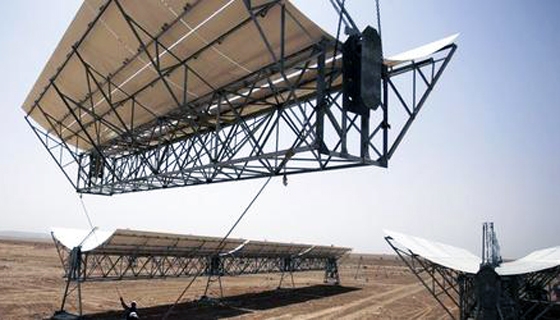Two landmark deals sealed in March have paved the way for Jordan’s power authority to begin buying solar electricity from the private sector, supporting the kingdom’s long-running efforts to boost renewable energy production.
With a reliance on imports for 96% of its energy requirements, identifying new generation sources is a critical issue. Further agreements are in the pipeline, which should strengthen Jordan’s bid to reduce its reliance on fossil fuels.
Solar milestones
The first agreement, finalized on March 17th, saw the Energy and Mineral Resources Ministry agree to purchase electricity from a 52.5-MW solar photovoltaic facility earmarked for the Ma’an Development Area.
Once fully operational, the $150m solar farm project, which is being developed by Shams Ma’an Power Generation, will have the capacity to generate 160m KWh of electricity per year, enabling it to provide power for around 35,000 homes. The initial power purchase agreement (PPA) is set to run for 20 years, after which Shams Ma’an and its US partner, First Solar, will be able to renegotiate the terms of their deal with the government and the National Electric Power Company (NEPCO).
Shams Ma’an CEO Hanna Zaghloul believes the solar plant, which should be completed by 2015, will play a part in Jordan’s bid to achieve energy independence.
A second contract, signed the following day, has cleared the way for the joint Jordanian-Spanish-South Korean venture, Arabia One for Clean Energy Investments, to build a $24m solar-run power generation plant. The facility, which is also set to be located in the Ma’an region, will have a 10-MW capacity and should start feeding power into the national grid towards the end of 2015.
Fuelling demand
While news of the solar project agreements is welcome, Jordan’s fuel costs, which currently equate to around 20% of the kingdom’s GDP, are giving cause for concern.
Data issued by the Department of Statistics in March showed the energy imports bill has soared of late, with costs for fuel derivatives and electricity imports in January up 46.6% on the same month last year. Much of the increase came from heightened demand for diesel, which has been needed to fire generators and offset a decline in natural gas imports following further disruptions in deliveries from Egypt. The import bill could edge higher still in the near term if the country is forced to continue bridging gaps in gas deliveries.
George Hanania, general manager of Hanania Energy, told OBG that Jordan’s energy import costs were unsustainable. “This cannot continue,” he said. “It is imperative to move towards alternative energy solutions as quickly as we can.”
While solar and wind power are attractive options, adding nuclear to the energy mix will have a much bigger impact on helping Jordan alleviate its dependence on imported fuel. In late 2013 the government announced it had awarded the contract to build Jordan’s first nuclear power plant to a Russian consortium. The facility will have two reactors – the first is expected come on-line in 2020, the second by 2025 – with a combined capacity of 2000 MW.
Eyeing energy independence
The Renewable Energy and Efficiency Law, which Jordan adopted in 2012, provides a guarantee that all power generated under PPAs will be purchased by either consumers or NEPCO, while offering investors added support and incentives.
The legislation will be instrumental in supporting Jordan’s drive to increase the part that renewables play in the kingdom’s energy mix. As part of its strategy for the industry, the government aims to boost the contribution made by the renewables segment to 20% by 2020.
Hanania described the government’s plans as positive, adding that the law “should alter our energy mix for the better, and should see Jordan become more energy independent”.
The national drive towards self-sufficiency looks set to gain further momentum in the coming months, as the government moves to finalize agreements with private investors on 10 additional solar energy projects. Energy Minister Mohammad Hamed said the 12 ventures combined would offer a total capacity of 200 MW, representing a $350m investment.
“All renewable energy projects are to be linked to the grid by 2018,” the minister said in an interview with the local media in early March. “These projects will significantly increase Jordan’s electricity production capacity, which stands now at 3200 MW.”
Oxford Business Group
12 May























































